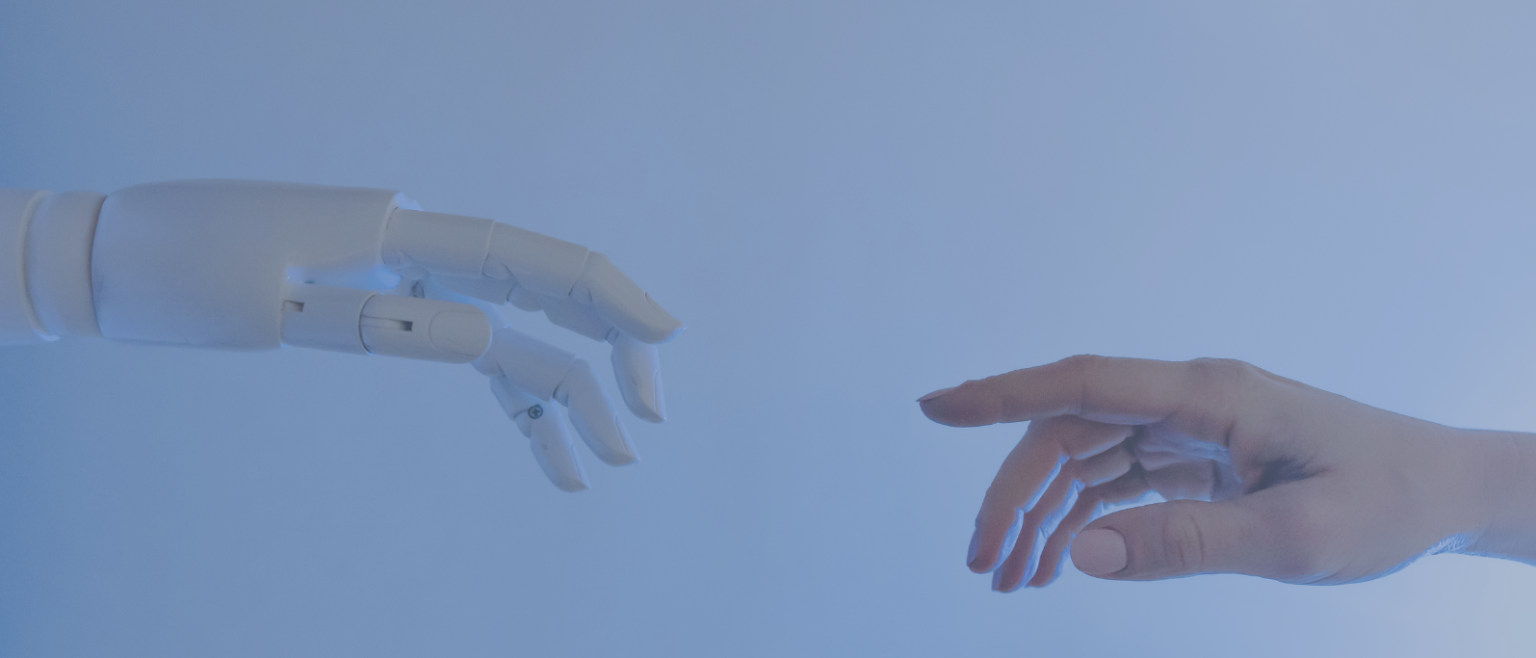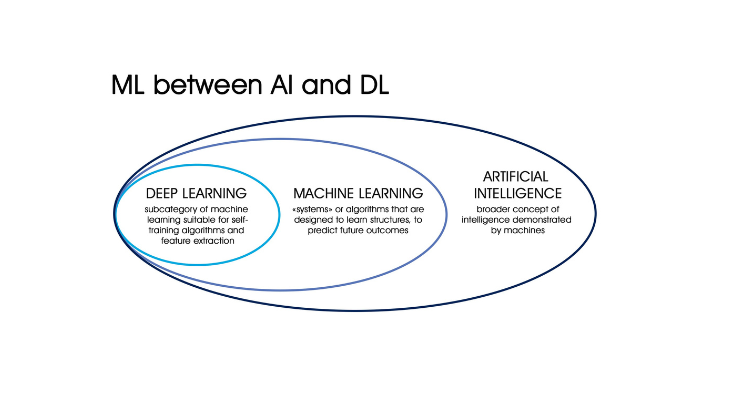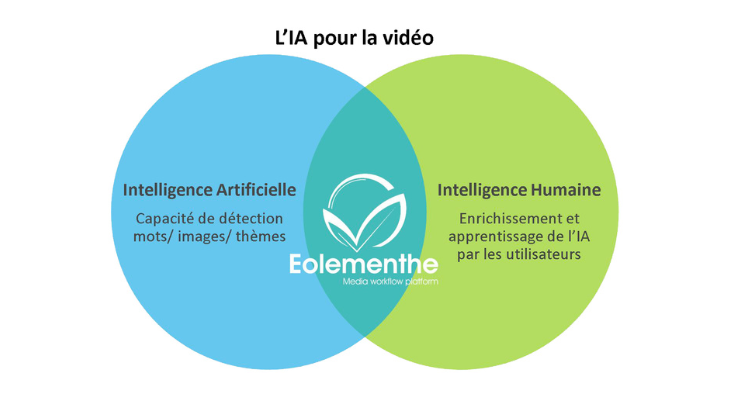IBC 2025 | Meet us in Amsterdam from 12 to15 september 2025

Artificial Intelligence & video:
the Human at the center
13 december 2019 - Author: Muriel Le Bellac
Artificial intelligence is without a doubt the 2019 trend, which leads to a lot of excitation but also fears. The main concern? That IA would be able to replace humans. What if we considered AI in a different way? If humans could make AI more intelligent and efficient, paving the way to a new professional future?
I’ve been working in the professional industry for 20 years, and this sector is undergoing profound changes. The IT arrived in this industry in the 2000s, followed by the cloud in 2010, which has changed the traditional way of working, at a technical, human and commercial level.
Indeed, companies now need new technical people to set up infrastructures: IT and networks backgrounds prevail, “classical” technical staff and video operators can feel neglected by their hierarchy. The cloud increases this perception, and adds the feeling of being dispossessed of its own skills. The use of online services keeps the conversation going and divides the teams. Yet, the story only begins: Artificial Intelligence burst onto the scene, as an additional important change to deal with. The use of the cloud effectively allows to handle huge calculation resources, able to result in rules, logics, sorting. The IA is about to disrupt the human/ machine relationship and modify the balance point.
IA: what are we talking about exactly?
An algorithm alone is not considered as AI, despite what some companies promote. Artificial Intelligence actually includes different technologies: Machine Learning and Deep Learning, among others.
According to Forrester (source: ‘Machine learning, Deep learning, AI, Big Data, Data Science, Data Analytics’ by Dony Ryanto, January 2019), machine (ML) is a field of artificial intelligence that uses statistical techniques to give computer systems the ability to "learn" (e.g., progressively improve performance on a specific task) from data, without being explicitly programmed. Deep Learning (DL) is an autonomous algorithm based on a neural system that can produce a similar or even better result that humans can. Deep Learning is especially used for image and voice recognition, automated translation, analysis of medical image, filters for social networks…
Lorem ipsum dolor
Lorem ipsum dolor sit amet, consectetur adipisicing elit, sed do eiusmod tempor incididunt ut labore et dolore magna aliqua. Ut enim ad minim veniam, quis nostrud exercitation ullamco laboris nisi ut aliquip ex ea commodo consequat.
IA for video
18 months ago, my team has begun the integration of IA tools onto Eolementhe, our collaborative web platform allowing medias, marketing and HR professionals to easily manage and deliver videos.
According to Gartner (source: ‘A Framework for Applying AI in the Entreprise”, June 2017):
“In general, AI is leveraged into digital businesses in one of six key ways: (1) dealing with complexity, (2) making probabilistic predictions, (3) learning, (4) acting autonomously, (5) appearing to understand and (6) reflecting a well-scoped or well-defined purpose.”
In the field of video, we can easily identify several use cases that reflect the machine learning, the prediction to save time in objects, places, people… detection, or the transcription.
- Indexing: document bases & archives
Archive centers, media library of training centres or companies, public institutions… handle and store many videos, which will be repurposed to re-create content on a specific topic. The question then is how to efficiently index this content with key words or images. Some examples: identify and list all well-known figures (politicians, athletes, actors…) that appear in a video. Or environments (city, beach, station, factory…), objects (cars, bicycles,...), in order to ease a future search to illustrate a specific subject (a train drivers strike for ex).
The artificial intelligence open up the way to an automated and relevant data extraction (in that case, with a face recognition), to ease the content repurposing. Forget the manual indexing, which is time-consuming, expensive and source of error. Human can now focus on high value added tasks.
- Sort content before delivery or broadcasting
Another use case: the delivery/broadcasting of content on TV channels, web, social networks…, with a preliminary sorting by the AI, according to the broadcaster’s criteria. We can think of scenes, faces, words… detection, that can answer the particularity of some countries (nudity, alcohol…) and channels (young audience…).
- Transcription and translation for subtitling
Another possible area for action: make AI recognize certain words (a terminology specific to a business sector, forbidden/ restricted words, brands,...) in order to get a self-learning AI. The goal is to offer a relevant and efficient transcription service, to then generate quality multilingual subtitles. Words coming from the subtitling can also be used as «tags », to ease the media indexing.
- The SEO, or how to improve the search engine
Likewise, the metadata that have been extracted by the AI can enrich the organic ranking of videos on search engines (title, keywords, people, transcription…), and then increase the visibility.
Lorem ipsum dolor
Lorem ipsum dolor sit amet, consectetur adipisicing elit, sed do eiusmod tempor incididunt ut labore et dolore magna aliqua. Ut enim ad minim veniam, quis nostrud exercitation ullamco laboris nisi ut aliquip ex ea commodo consequat.
Create a supplementary learning loop to benefit from the best of both worlds
That’s one of the paradox of Artificial Intelligence: it needs us to learn. Forget the myth of the all-powerful AI, endowed with a conscience and able to replace every side of humans. Without learning, an artificial intelligence tool will be limited.
Several global companies are currently working on AI for the video: Google, Microsoft, IBM, but also all the specialized editors (transcription, etc…).
On the BtoB market, editors train their AI internally. There is no mutualized learning between users, in order to limit the risks of errors in the data. The data is key, and must be controlled (do you know the expression « garbage in = garbage out »?).
On the other hand, some editors provide an « empty » software, up to you to train it according to your own needs. Besides, new technologies arise to get companies the tools to develop their own learning models, without the (rare) skills of experts or Data Scientists. The Auto ML is one of these trends, which allows to easily create Machine Learning models.
At Videomenthe, we chose to combine automated cloud services and human actions, to ensure our clients a quality result.
To go further, my team is currently working on the integration of Deep Learning and AutoML, so that users can improve the automated tools of Eolementhe by their own data. Ex : for transcription, a learning loop is proposed. Users can add custom words to the dictionary, so that when they do come up, they are transcribed without error. The goal is to enrich the Eolementhe AI account with human corrections made by our users, in order to create a virtuous improvement circle.
We’re actually heading towards a platform with features that will be improved by AI, itself enriched in a collaborative way by our community of users!
To go further, my team is currently working on the integration of Deep Learning and AutoML, so that users can improve the automated tools of Eolementhe by their own data. Ex : for transcription, a learning loop is proposed. Users can add custom words to the dictionary, so that when they do come up, they are transcribed without error. The goal is to enrich the Eolementhe AI account with human corrections made by our users, in order to create a virtuous improvement circle. We’re actually heading towards a platform with features that will be improved by AI, itself enriched in a collaborative way by our community of users!
Conclusion
We should demystify artificial intelligence. When used on a relevant, ethical and well-thought-out way, AI offers time to people and eliminates fastidious tasks. It’s typically the case for, with an essential human expertise to add value to content.
“Ten percent of firms leveraging AI will bring human expertise back into the loop” Forrester Predictions 2019 Future developments will natively integrate AI, simply because it will be an obvious fact, not a buzzword anymore.

